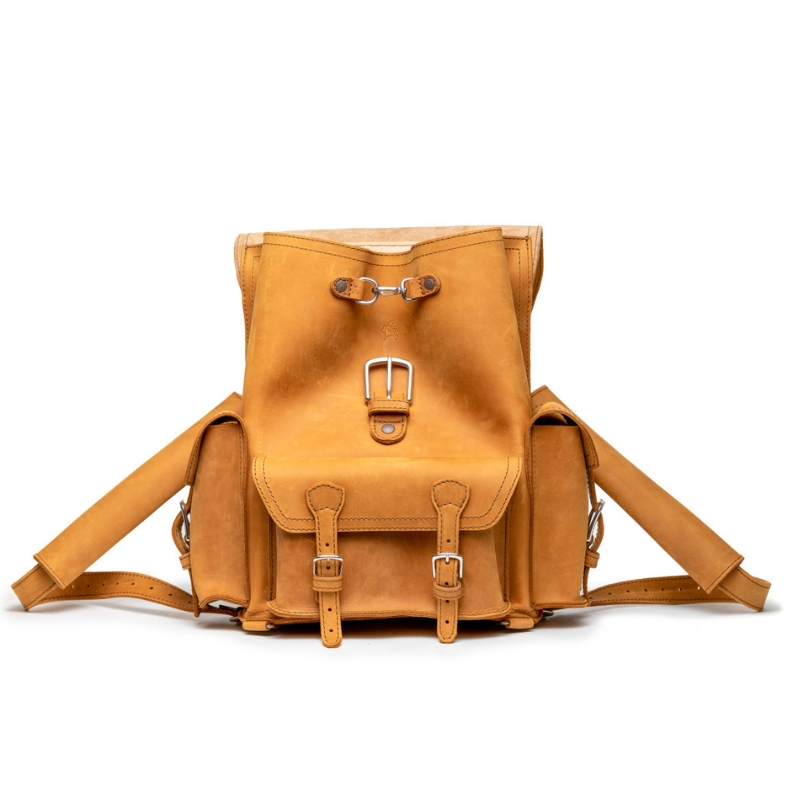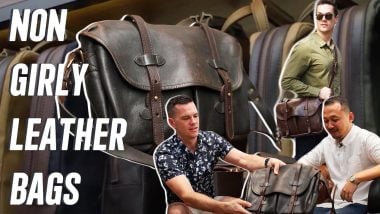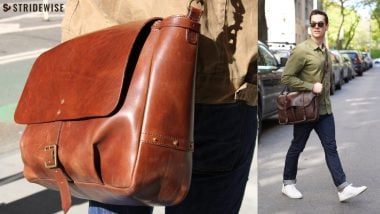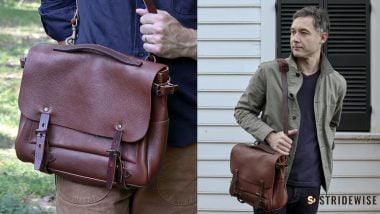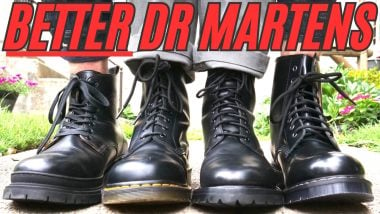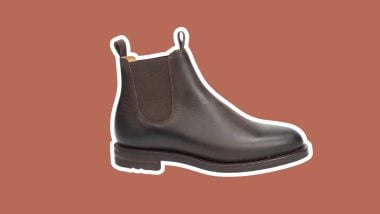Saddleback Front Pocket Backpack Review: An Extraordinary Tank-Like Bag
I review all manner of leather bags on my YouTube channel, but there may be no brand in this space with a heavier rep than Saddleback Leather. I guess I mean that literally: they might sell the heaviest leather bags I’ve seen.
Stridewise has reviewed their bestselling briefcase and pilot bag, so we thought it was about time to look at their flagship backpack: the Saddleback Leather Front Pocket Backpack.
With a 100-year warranty and the similarly themed slogan of “They’ll Fight Over It When You’re Dead,” this is not a leather brand built around notions like luxury or the finer things, which might surprise you given their price. No, Saddleback is about rugged durability through and through, and I’m excited to talk about the pros and cons of my last six months of using this leather backpack.
Editor’s Note: Saddleback sent me this bag to review, but all the opinions in this video are mine. I did not share this content with Saddleback prior to publication.
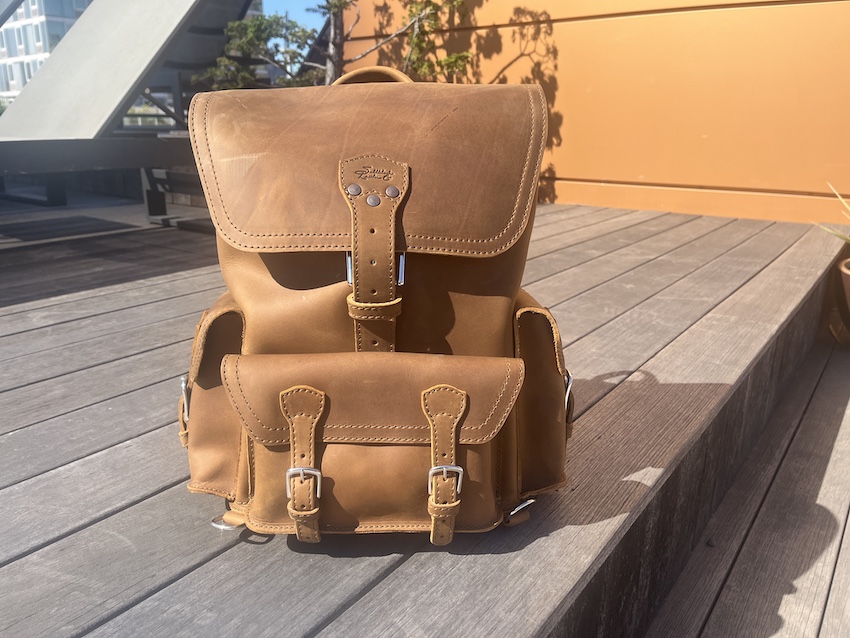
Pros & Cons
After six months of pretty heavy use, here’s a quick breakdown of my thoughts on the Saddleback Frontpocket backpack.
What I liked
- 100-year warranty
- Insanely tough build: single panels of leather wherever possible, and no zippers or breakable parts
- Leather is among the thickest I’ve ever handled
- Water-resistant materials and design
- Pigskin lining offers extra strength
- Laptop sleeve fits a large laptop, a feature that’s not so commonplace with nice bags
- Secure buckle closures make it practically pickpocket-proof
- Hidden slip pockets behind those buckle pockets, so you can have quick access to some items
- Looks damn cool: there’s nothing dainty or upper-class about this bad boy
The thickest leather, toughest build, and most generous warranty of any leather backpack we've seen.
Downsides, not deal breakers
- No zippers: This is so there are no breakable parts, but it’s slow to get in and out of these buckle closures on the go
- Heavy: it’s 6 pounds empty
- Not versatile: This is the most casual bag ever
- Raw edges: Some prefer finished edges on their leather bags; these will get a bit frayed with use
- Leather might have scarring: The company warns you of this fact, and it doesn’t make the bag more fragile, but you might prefer a cleaner look
- Not cheap: the price makes sense for the build, but you might expect it to be made in the USA or with veg tan leather for that price
- Not kosher or halal, in case that pigskin lining is a problem for you
- A lot of the buckles and D-rings are unnecessary for the average dude who isn’t lashing it to a pack mule.
How I Tested My Bag
For the past six months, this bag has been hauling all my junk as my daily EDC carry to work in the rain, wind, and sun. I can assure you that I have been throwing it around and abusing it like I would any other backpack. (But some of these photos are of the bag when it was newer!)
I intend to continue to use this bag as long as possible, without reviewing another pack. This thing has just been great so far, so let’s get into some of the reasons why I want to beat the hell out of it and use it in as many situations as possible.
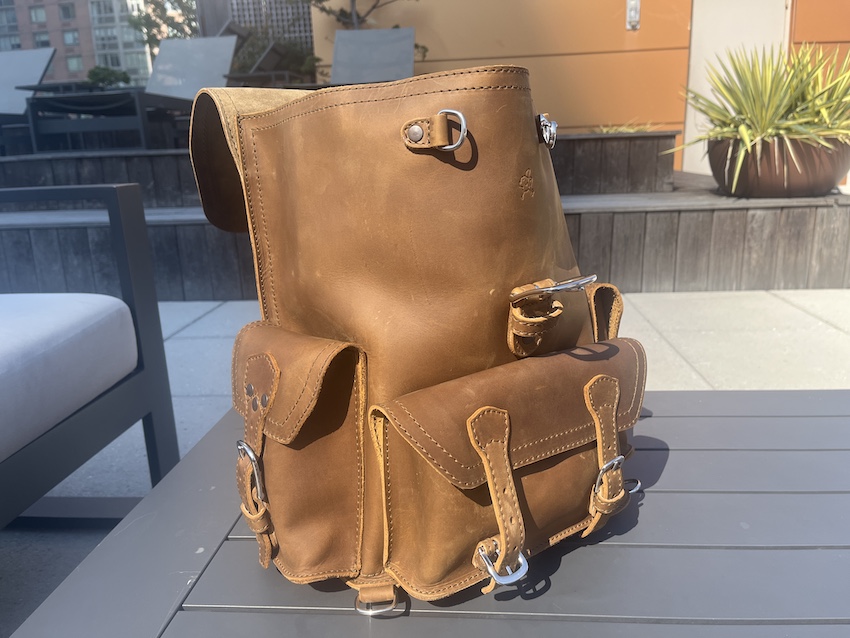
Saddleback’s Leather
- Chrome tanned full-grain cowhide leather
- Raw edges give the bag a more rugged, unfinished appearance
- Made from large pieces of leather = fewer failure points and a cleaner look
- Tanned by the famous Lefarc Tannery in Leon, Mexico
- Condition with Chamberlain’s or Venetian Shoe Cream
Before getting into the features, we should talk about the main event: the leather.
Available in four colors, Saddleback’s leather has a lot of pros and a lot of cons.
The (Potential) Cons
- It might come with scars.
- It’s bonkers thick and heavy.
- The leather is chrome tanned; some prefer the (pricier) veg tanned leather for (pricier) leather bags like this.
The Pros
- It’s great quality and produced very sustainably.
- Using chrome-tanned leather makes a more water-resistant bag.
- The thickness is like a novelty: in all my years, I’ve never handled such thick leather.
- This leather ages very nicely.
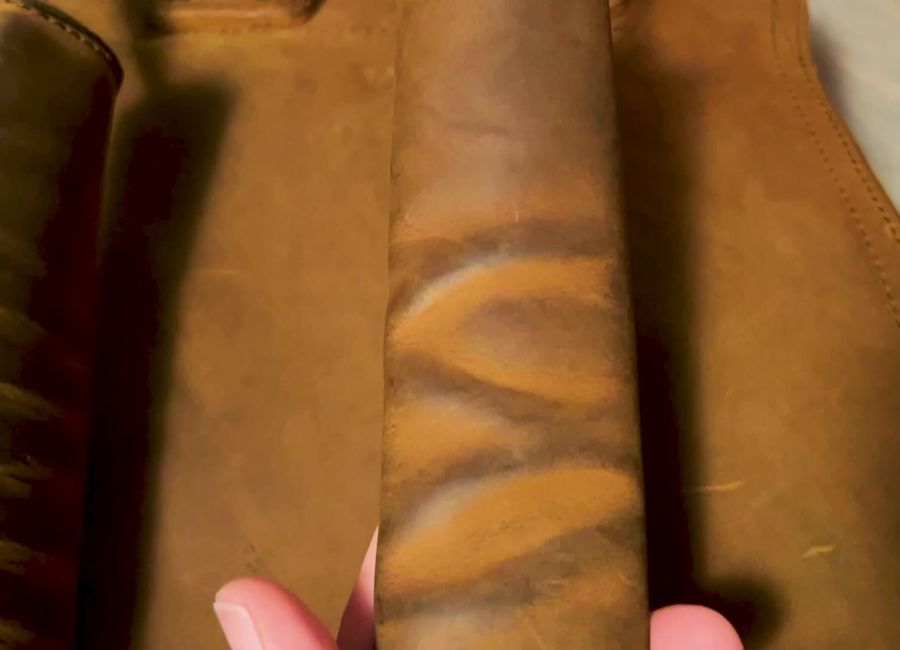
Saddleback tries to keep the source of their leather a secret, but Stridewise has actually visited the people who make it: Lefarc Tannery in León, Mexico.
Since Saddleback Leather is first and foremost a leather brand, I’ll give you a quick explainer of how leather is made. Most leather is either chrome-tanned or vegetable-tanned, and Saddleback’s is the former.
Invented in the 19th century, chrome tanning is the newer method: it’s faster, cheaper, and makes for softer leather. There’s a misconception that chrome tanning is bad for the environment, but it’s not true: it can be bad for the environment, but it can also be made very responsibly, as you can see in the video above that we made at Saddleback’s tannery.
Saddleback’s leather ages exceptionally well, taking on a dark, burnished look where it gets handled the most. Stridewise writer Troy is a Saddleback superfan and owns an 11-year-old briefcase he reviewed; check out how great his leather looks today.
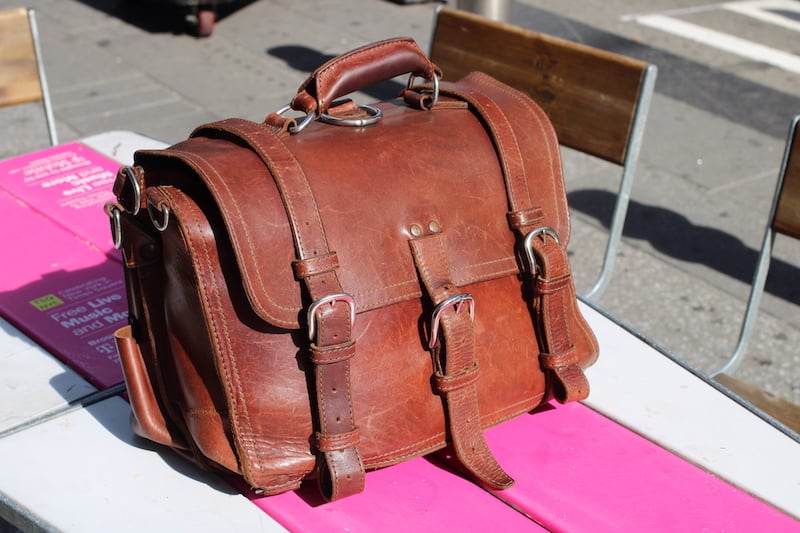
Some people have complained about the price of these bags, arguing that chrome-tanned leather is less desirable than vegetable-tanned leather. I’d emphasize that not only is this leather much thicker than most bags (including any veg-tanned bag I’ve handled), it also contains more leather overall (it’s so damn heavy), and it’s large, single pieces of leather wherever possible. That increases the price, but gives the bag fewer places to break — and it just looks a lot better than a bunch of smaller pieces stitched together.
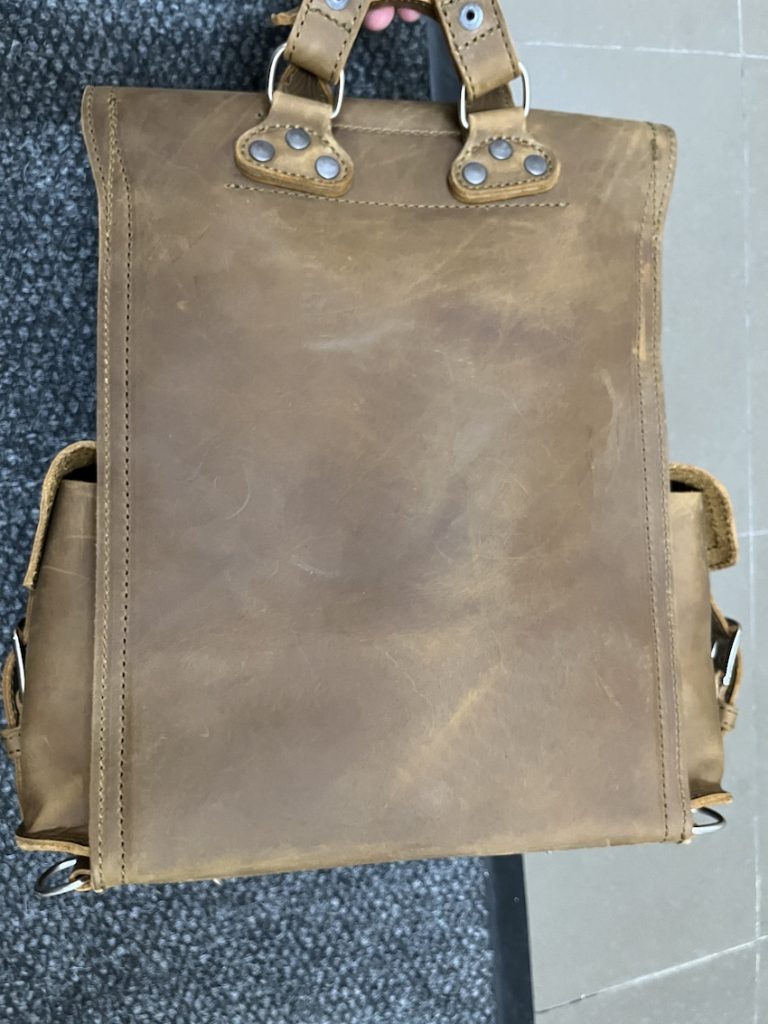
Saddleback’s founder, Dave Munson, has explained that chrome-tanned leather has the strength, look, and water resistance needed in a bag that’s meant to last.
He’s right that chrome-tanned leather has plenty of advantages over veg-tanned leather, like water resistance. I have used this Front Pocket Backpack in the rain several times and soaked it through in a thunderstorm recently — a bit deliberately, so I could see what it could handle — and you can’t even tell. There are no water spots or staining, and it didn’t even take long to dry.
That’s partly because it’s chrome tanned but also because this leather is full of oils: they perform two desirable functions of making it more hydrophobic and longer lasting, because it won’t dry out any time soon. (Like your own skin, leather looks better and lasts longer when it’s not dry.)
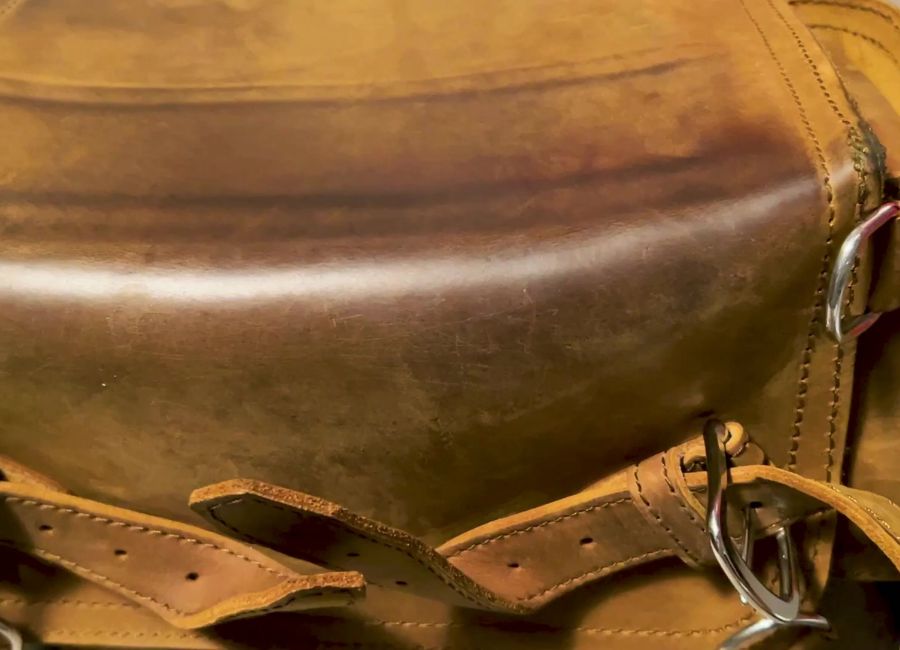
the ugliest our bags ever are, is the day that you get them.
That’s a cheeky quote from the brand themselves, referencing the fact that the leather’s appearance will improve with use: so use it as much as you can.
Besides the weight and the price, the main potential downside you should note is that, unlike some brands that put a lot of work into selecting perfect pieces of leather, Saddleback will use pieces that have scars from the animal’s life.
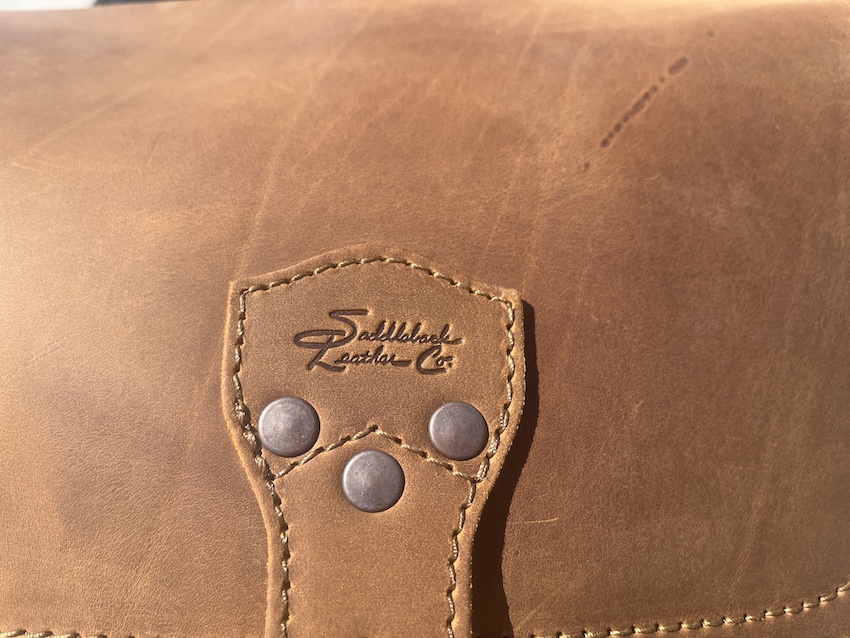
I can see that being a dealbreaker for a formal briefcase, but given how casual these bags are, I think the scarring just makes them look cooler.
The shoulder straps and closure strap are the two most contacted points of the bag, so there are some obvious signs of my clothing rubbing and my hands grabbing and manipulating it. Since I open and close the front strap every time I use the bag, the straps are all bending and darkening around the buckle, and there’s scratching in the oily-finish leather from my fingernails.
The thickest leather, toughest build, and most generous warranty of any leather backpack we've seen.
Specs
- 12”x17”x7” (23.5-liter capacity)
- 6 pounds empty(!)
- Full-grain, chrome-tanned leather
- Pigskin lining for extra strength
- Fits up to a 17″ laptop in the sleeve
- Slip pockets behind pockets; decent functionality
- No zippers anywhere
- Stainless steel hardware, strong polyester thread
The front pocket backpack measures 12x17x7 inches, which is roughly 23.5 liters. It weighs 6 pounds empty, which is pretty heavy in the world of backpacks. The laptop sleeve fits any-sized laptop (Nick comfortably fit his 17-inch one), which is a welcome addition. It’s always a shame when you get a leather bag only to find that it won’t fit a large laptop, like Bleu de Chauffe’s (medium) Postman.
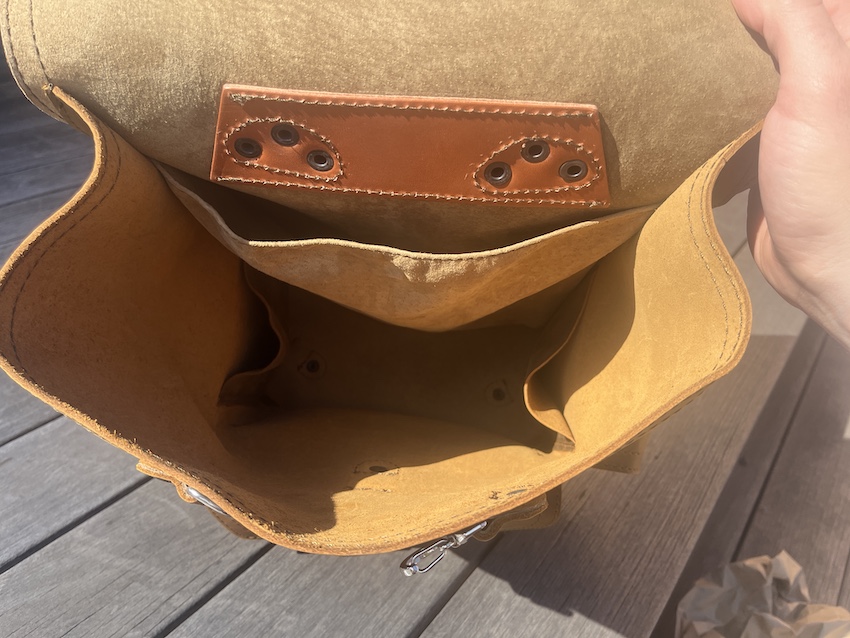
There’s not a ton of functionality here: the emphasize on making a bag with no breakable parts means there are no zippers anywhere to be found, which I’ll concede is a downside for me: I prefer somewhere secure to stash my valuables, but I also just miss being able to get in and out of the compartments quickly.
Everything closes with buckles, so it’s a bit cumbersome to open them on the go, but an underrated benefit is that they make the bag very pickpocket-proof.

And I can’t complain too much about the ultra secure pockets because they all have hidden pockets behind them into which you can slip your passport or wallet.
A middle ground of “secure” and “easy to access” would be a zippered pocket, but I like that Saddleback gives you these two options for your everyday carry.
Saddleback Front Pocket Construction
Here are some highlights from the bag’s construction that some people might miss.
Single Pieces of Leather
$649 is a pretty hefty price tag for this bag, but one factor that I think justifies the price is that Saddleback makes this bag using single, large pieces of leather wherever possible. That has the benefits of making a more aesthetically pleasing bag (compare with Kodiak’s monstrosities) and fewer seams means fewer areas can tear or allow water to enter the bag.
It’s something I love about leather bags: fewer seams are both more structurally sound and more aesthetically pleasing. It’s also more expensive: cheap bags have more seams because you can make them with more scrap pieces of leather; it’s hard to find nice, big sheets of leather. Maybe I could argue that it’s less wasteful to use more pieces of leather, but I’d be getting sidetracked.
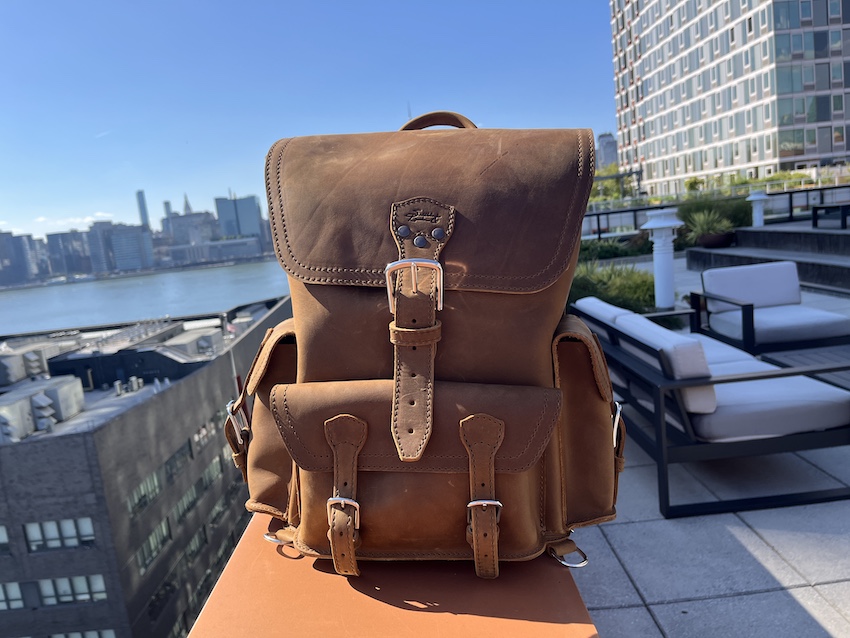
No Breakable Parts
Zippers are great, but they can break — Nick has had to send his Filson duffle off to fix the zipper three times in the six years he’s been using it. (To their credit, Filson does free repairs.)
Saddleback, like Cravar, wants to eliminate the possibility of something breaking while you’re out in the wild, so there are no zippers, buttons, or velcro: only buckles.
Everything you manipulate to use it is either a strap, buckle, D-ring, or metal clip. This bag uses only one metal clip in the front to tuck the sides at the top and keep them underneath the top flap, keeping out rain or debris.
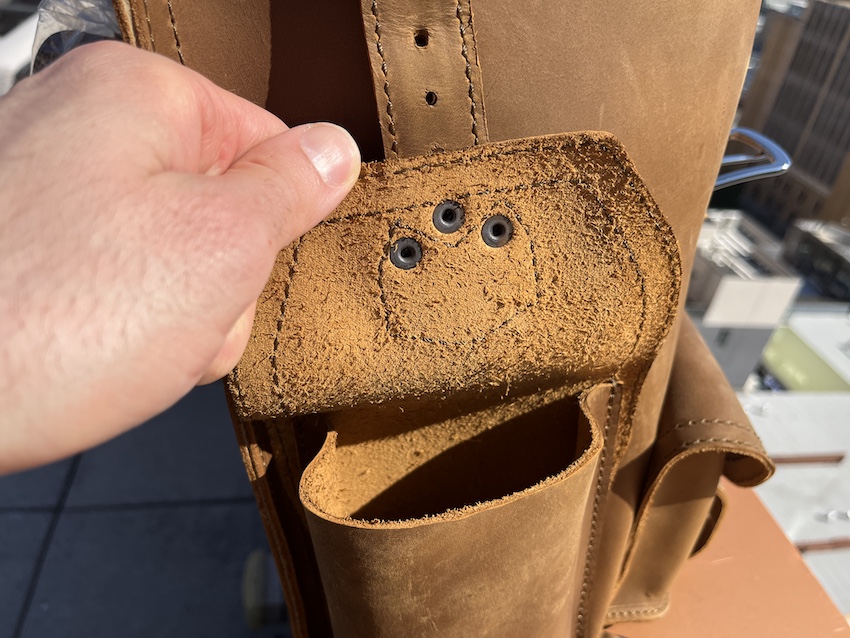
Rainproof
I have used this bag several times in the rain and can vouch for the effectiveness of this design. I’ve never found any signs of water in the bag, and my stuff has stayed dry.
The leather itself is water-resistant, but the pockets are designed so that the flaps cover the opening completely: nowhere for water to ingress.
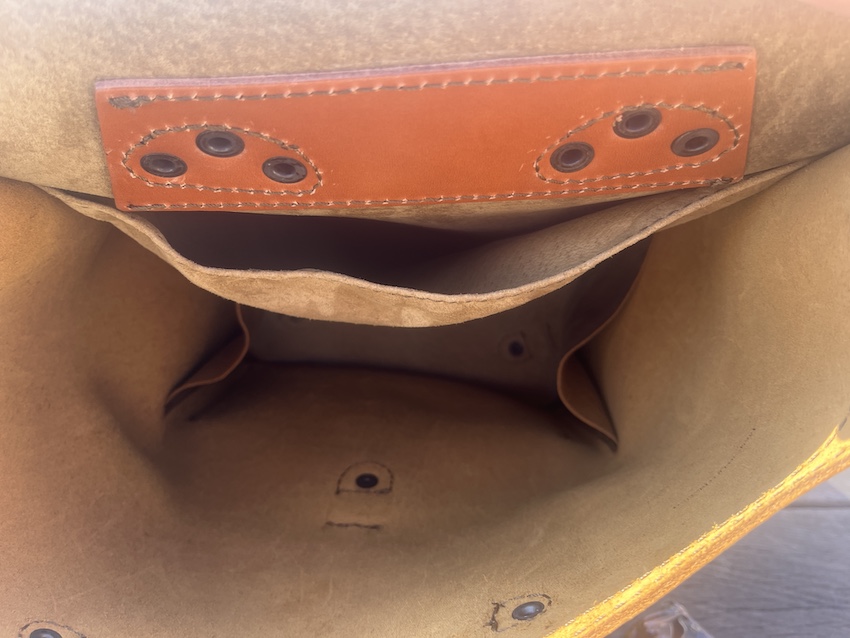
Leather Won’t Stretch Too Much
Inside and around the bag, you will see evidence of a design intended to keep the leather from stretching with use and to keep all the stress points secure. There are plenty of rivets, stitching, and backing used in all the right areas. The interior is also lined with pigskin, which is a remarkably strong leather.
I’ve only been using this bag for a month, but I expected to see some signs of wear, and I seriously do not see any.
Further Reading
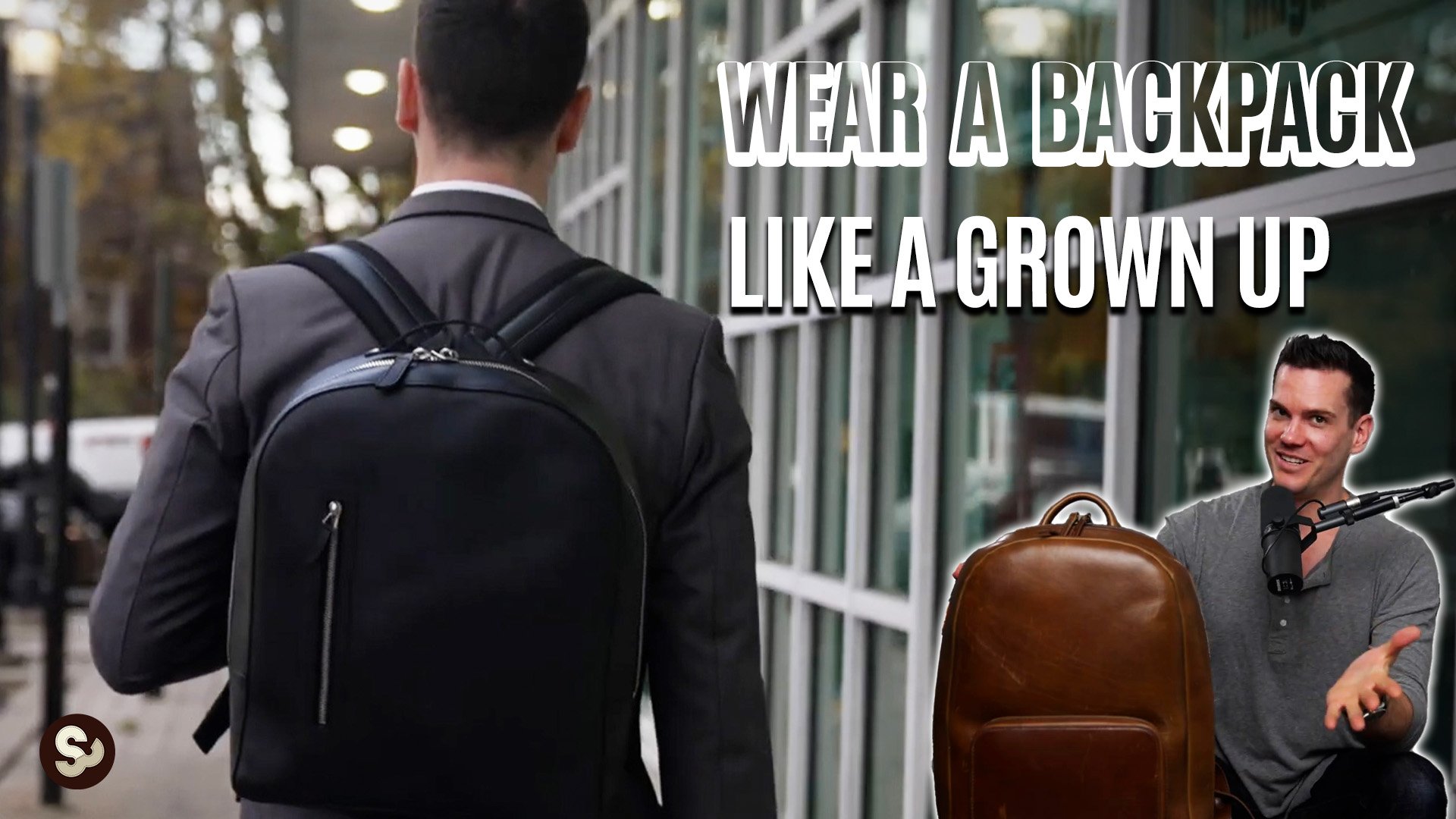
What To Look For When Purchasing a Leather Backpack
We spoke with leather experts to find what makes and breaks leather backpacks. Learn more →
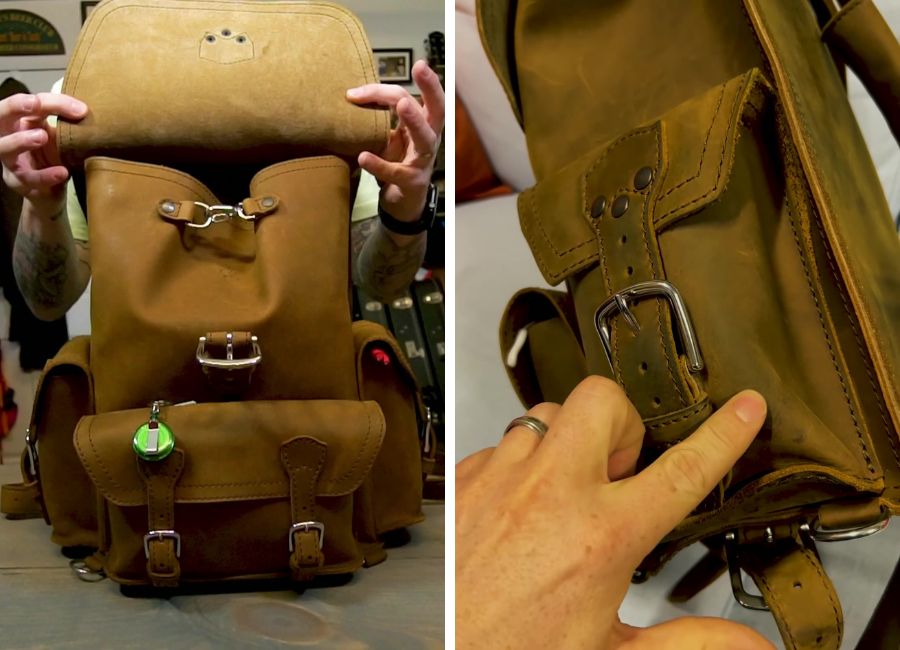
Price: Is Saddleback’s Backpack Worth It?
- $649
Do I think that the Saddleback Leather Front Pocket Backpack is worth $650? Yes, I do.
It’s a unique product with serious heft that makes you think of adventure whenever you handle it.
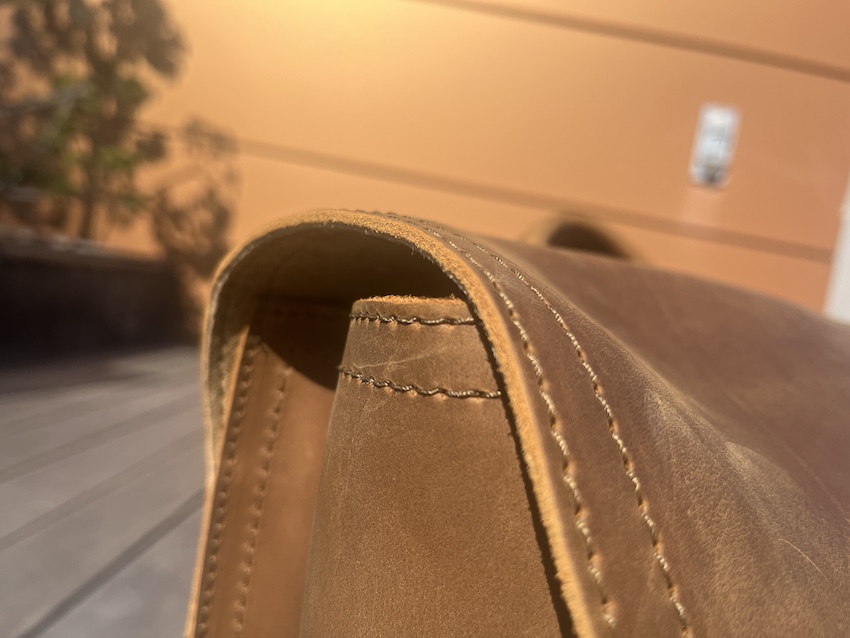
This is a premium product you will have for a very long time. The lifetime guarantee alone should be enough to convince you of the quality: the 100-year warranty will certainly outlast my lifespan, and I’m tickled by the idea of my kid sending it back for repair if needed. I’m excited to keep wearing this pack and eventually get that Indiana Jones beat-up leather bag or satchel look that my boy will one day enjoy.
The thickest leather, toughest build, and most generous warranty of any leather backpack we've seen.
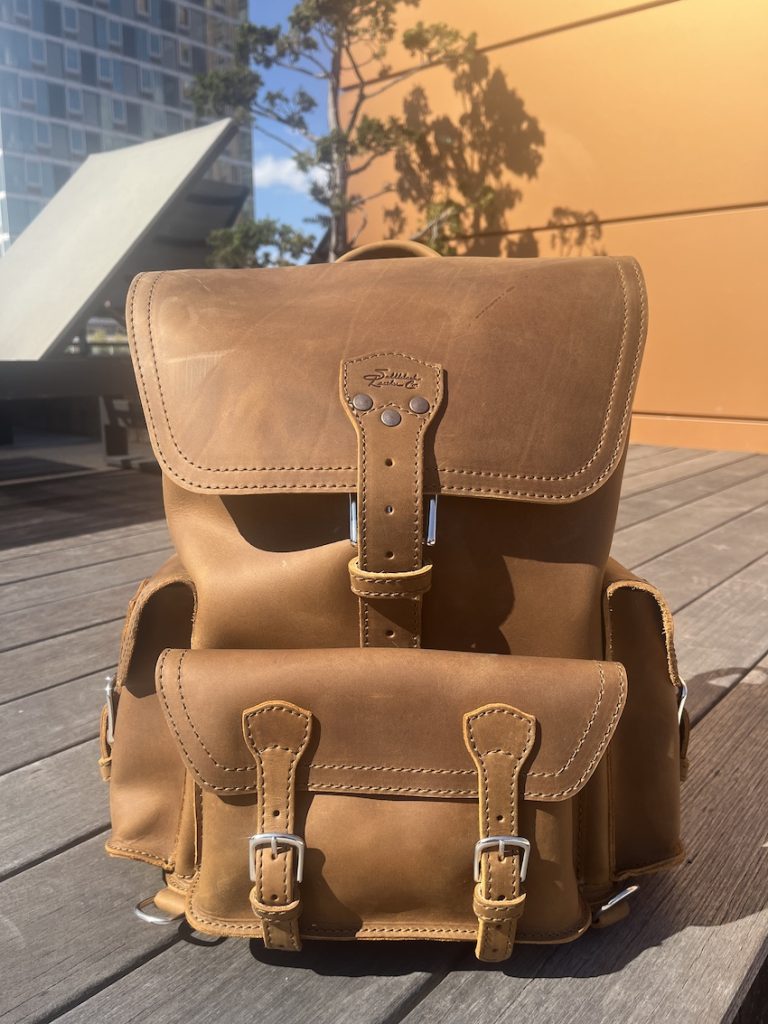
Wrapping Up
With a little conditioning every once in a while, this bag is going to look great and last the rest of my life, so I think it’s worth the price tag: the cost-per-wear will end up being minuscule.
If you’re still on the fence and thinking about it, I’d say go ahead, pull the trigger. As long as you like the look of Saddleback’s Front Pocket Backpack (I respect that it might be divisive), you’re not going to be disappointed.

